Fear, doubt, feeling out of touch with colleagues. These are just some of the challenges executive coaches and former colleagues Charles Story and Richard A. Smith have addressed in their more than a half-century of combined experience working with, and serving as, executive leaders. In a recent conversation, they talk about the methods and approaches they apply when guiding clients through challenges on the way to peak leadership performance.
How do you advise leaders early in their careers to manage fear and self-doubt?
Charles Story (CS): Always be prepared. Ask for feedback. Have mentors. Assemble a personal board of directors that serves as a sounding board. Take thoughtful risks and own the outcomes, knowing they lead to better decisions in the future. If you build some success, it will build your confidence.
Richard A. Smith (RAS): Look at that fear. How does it manifest itself? Name it and talk about it. Sometimes the fear is much bigger in our minds than in reality. I often talk with leaders who think they need to know all the answers already. I try to remove that weight from their shoulders. Let’s examine a situation from all sides, list the steps to take, and develop a plan to get through them. Also, ALL leaders have fear and doubt. Good leaders have a process to move through it.
Feeling confident that you have the knowledge to make the next best decision is also critical to taming doubt. Think of an army. The general can’t be all places at once. The troops report what they find and then the leader implements a strategy based on their feedback. A leader needs to ask questions of the people closest to the work.
CS: Context is king. If you’re asking people for feedback, tell them why. You can say something like, “I’m making sure I’m getting well-rounded feedback. I trust you, that’s why I’m asking you.” That helps build trust at differing levels of an organization, and it helps leaders make better decisions. Never be afraid to skip levels in search of the information you need to do your job better. More information leads to less fear.
What do you believe is the hardest aspect of leadership?
CS: No question, it is making decisions, particularly those that affect the strategic direction. The higher you ascend, every decision you make can affect the success or failure of the company. People’s livelihoods are at stake. As a former CEO, I can tell you that we feel the weight of the world on our shoulders.
RAS: I’d agree and would add stress management. If a leader at any level doesn’t understand how stress impacts them, they have to figure out how to handle it productively. Talking it out with a trusted friend or advisor, exercise, waking up, and having “me time” are all ways to manage stress. It’s so important because you’ve got to find ways to release pressure. Every leader needs to know what works for them.
Understanding what information to use, how and when is also a challenge. With a ton of information flowing to leaders, clarity in goals and behavioral values can provide much-needed guidance. Discernment and good judgment are very hard to master. The only way to get better at these two important skills is to have a clear understanding of what needs to be done, who needs to do it, and what ultimate goal to keep in sight.
Never be afraid to skip levels in search of the information you need to do your job better. More information leads to less fear.
How can ascending leaders develop good judgment and discernment?
RAS: A leader has to have a north star, whether that’s personal standards or corporate values. How we get to our goal is up for discussion, but behaviors that violate our values are not up for discussion. Many leaders start out with a sense of purpose but over time they may begin to cut corners in order to accomplish a goal. This is a slippery slope that can lead to erosion of good judgment. As the old saying goes, if you don’t know where you’re going, any road will do. Discernment means you can filter out what won’t get you to where you need to go.
It can get tricky for leaders because of their ambition or external pressure to perform and the agendas of those around them. But over time, with a trusted team, leaders can learn which fire to put out and which to let burn. In viewing situations from an enterprise perspective, judgment can stay objective. Stay focused on what will threaten or advance the organization as a whole.
CS: Have smart people you trust around you. Seek diverse thoughts from differing thinkers and have open and honest conversations. You need team members who see situations from 50,000 feet and those from just 5 inches away.
Ask team members to share what they’ve read, heard, and seen from their information sources. Distill the information you take in and the information your trusted team shares with you, then develop your takeaways. When you have an 80% or better clear picture based on valid input, you make the call. Don’t let perfect be the enemy of good.
I have a current coaching client who relies on enterprise thinking for making judgments. As the final piece to deliberation and decision, he asks, “What is in the best interest of the enterprise?” It may not be in the best interest of my department, but it is in the best for the organization as a whole. That takes away the personalization of a decision and provides an elevated perspective. If leaders can’t do that and get beyond the day-to-day focus, they’re not on the succession plan.
Leaders need to talk to the people doing the work to find out what’s happening that is good, and what could be better. But don’t shoot the messenger.
How can leaders keep their fingers on the pulse of their organization?
RAS: When I worked in a manufacturing firm, we scaled down to a lean manufacturing arrangement. Instead of top-down management, we took direction from the bottom up. Those closest to the work gave input to strengthen the manufacturing process. This proved to be a worthwhile strategy in determining how we managed our inventory, and it saved the company millions. This is a strategy that can be useful in any industry. Leaders need to talk to the people doing the work to find out what’s happening that is good, and what could be better. But remember, the highest nail tends to get hammered down. Don’t shoot the messenger; take input and do something positive with it.
CS: Ask beyond your typical group of trusted advisors. As a CEO, I had 13 people on my leadership team. But many didn’t realize I went way beyond this group to seek out information and perspectives. I’d ask individuals at all levels of the organization how they felt about things, how they interpreted information received. They provided valuable information and, in turn, felt valued. The hardworking people at the lower levels of an organization don’t get asked for input very often.
Once leaders get that information and implement some initiatives using that input, trust increases exponentially. Individuals can say, “I didn’t just talk. I was heard.” And this is really how you successfully seed the crop. You’ll enhance morale while also getting more useful information in the future because you started that process.
What is one of the greatest challenges or opportunities you’ve coached a leader through?
RAS: I was coaching a sales leader for a large communications company who was extremely bright but hard to work with and for. Through our sessions, I made her aware of how she was impacting others and we developed strategies to manage her own sense of urgency and more effectively motivate others. She was unaware of how she was coming across. With greater self-awareness, she broke a damaging pattern. She rebuilt relationships with peers that were broken and was able to support her division so well that it delivered 53% of the net profits for the organization that year. The change was astonishing, and she received several higher-level opportunities subsequently.
CS: I was coaching a foundation director who was interested in pursuing the president/CEO position in her non-profit, which had recently been vacated following a long tenure. It’s extremely rare for the top role in an organization to be filled by someone at the director level, but she was incredibly skilled, and she had the potential to do that job. She had a great deal of self-doubt. But we successfully worked to strengthen her confidence and ability to highlight her skills, accomplishments, and strategic vision. We also did a lot of interview prep to get her ready for the lengthy interview process. Ultimately, she won the role in a national search and is still there, doing a fabulous job.
For more insights from Story and Smith, check out Part 1 of their discussion.








